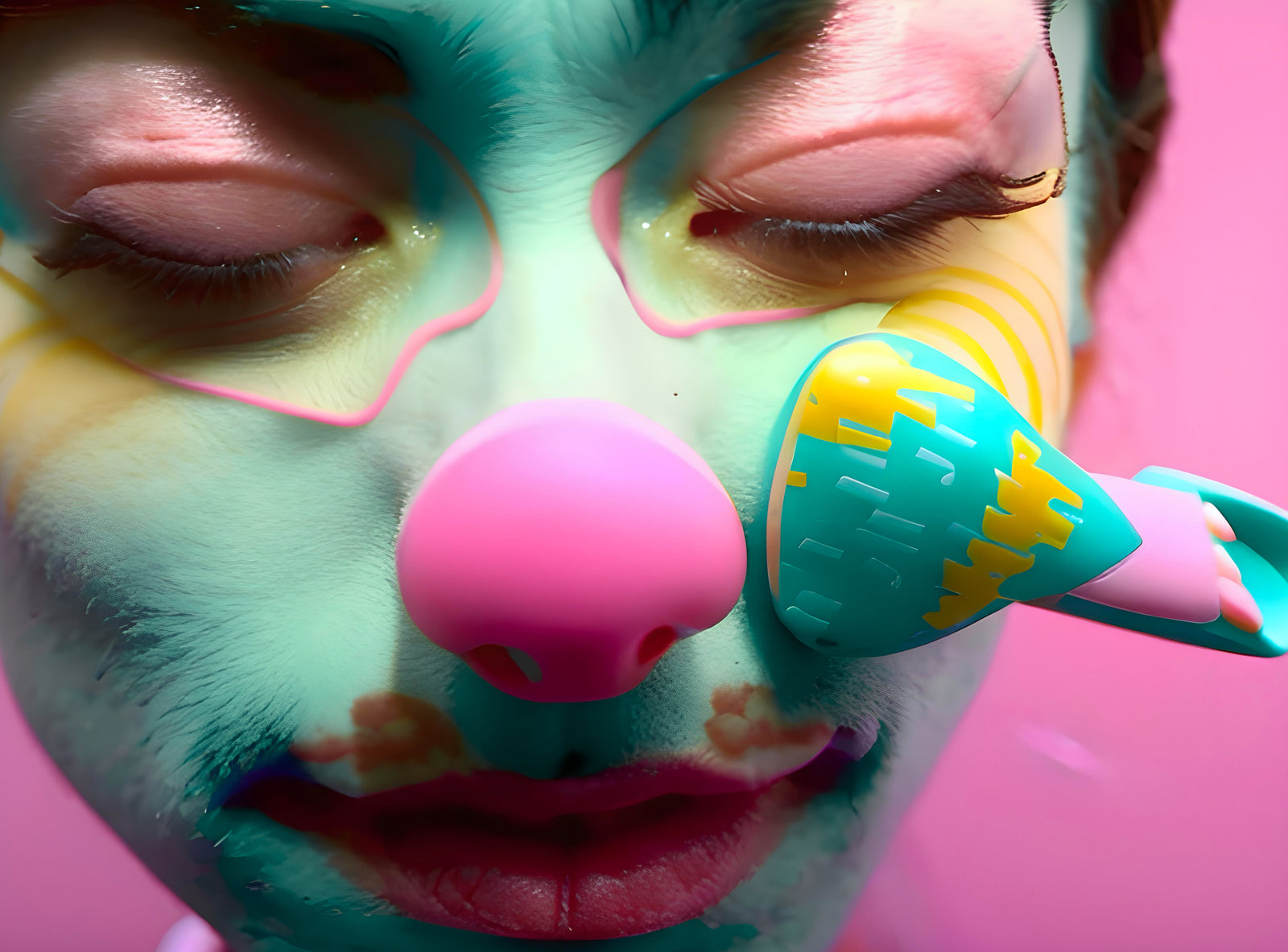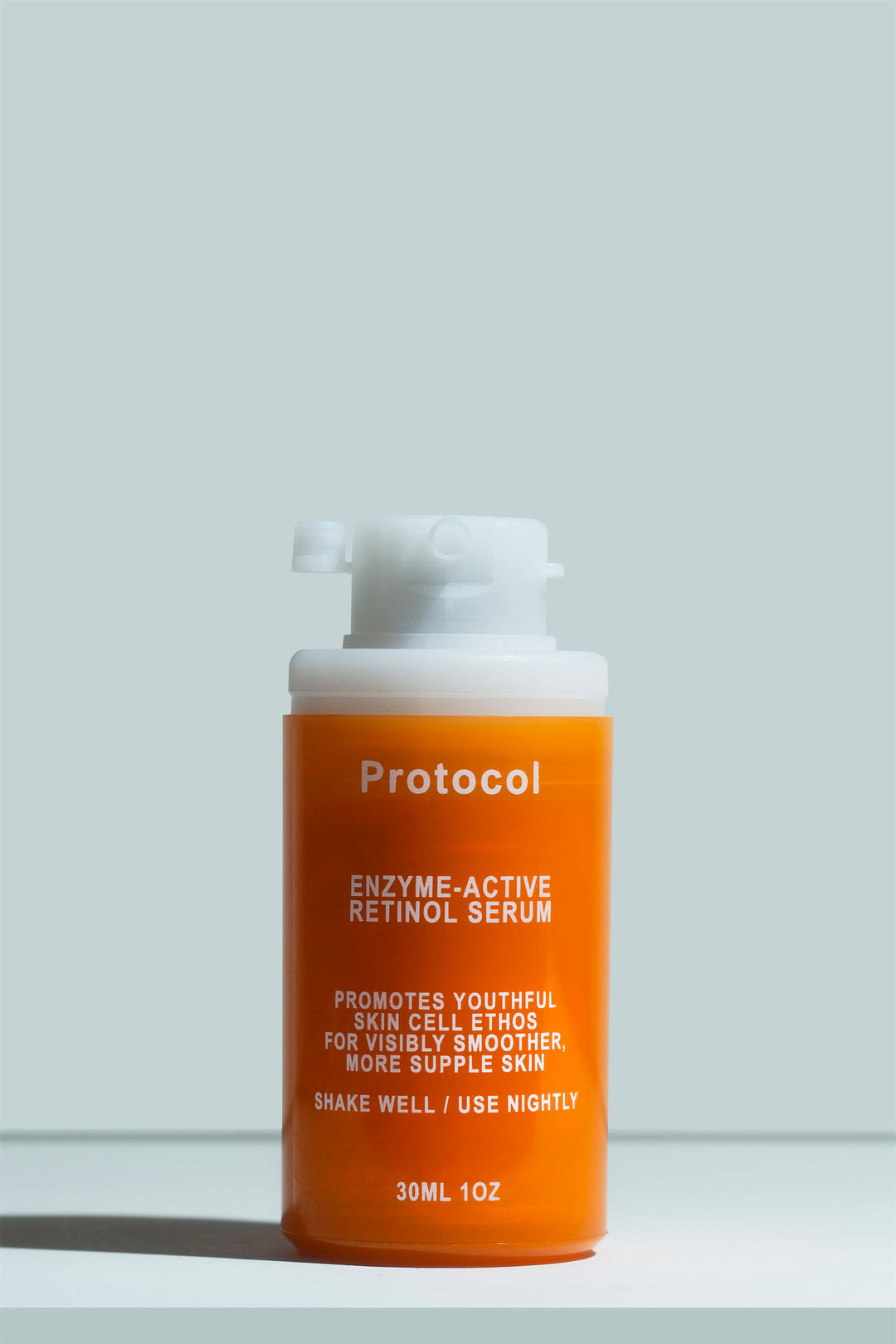How To Get Rid of Sebaceous Filaments

Sebaceous filaments are little dots of almost clogged pores. They usually cover the nose, but you can also spot them on the chin or cheeks.
These little annoyances pose no harm to your skin, but that probably doesn’t stop you from wondering: How do you get rid of sebaceous filaments?
In this post, we’ll explain what sebaceous filaments are, what causes them, and all of the best methods and products to get rid of them (and prevent their return).
Post at a glance:
- What are sebaceous filaments?
- What causes sebaceous filaments?
- 6 ways to get rid of sebaceous filaments
- Can you get rid of sebaceous filaments for good?
- FAQ
- Sebaceous filaments: friend or foe?
What are sebaceous filaments?
Sebaceous filaments or SFs are little plugs of dead skin cells (made mostly of keratin) and sebum (the oil produced by human skin). Unfortunately, they can take away from the clarity and smoothness of your skin when they’re very noticeable.
Sebaceous filaments can be skin-colored, white, yellowish, or brown. Unlike clogged pores or blackheads, they don’t block oil from flowing to the surface of the skin, and they’re not prone to inflammation.
As dermatologists stress, sebaceous filaments are a perfectly healthy feature of human skin. While they were originally covered in dermatological literature in the 1970s, they’ve received little additional attention over the decades, aside from the occasional single-patient case study.
It’s only in recent years, as cameras become more powerful and we pay closer attention to our skin, that sebaceous filament removal has become a common topic of discussion in skincare communities.
What causes sebaceous filaments?
Sebaceous filaments form because of the skin’s natural oil production and dead skin cell shedding process. When dead skin combines with sebum it becomes sticky and paste-like. It can stick to things, including to the “peach fuzz” hairs that grow out of your pores.
The dead skin and oil mixture can harden at the surface of the skin, forming a visible little clog or bump. This is especially common in areas with more oil production or larger pores, like the nose and inner part of the cheeks. In other cases, dead cells can struggle to shed as a result of skin dehydration, which can cause a high concentration of very small sebaceous filaments in one area.
6 ways to get rid of sebaceous filaments
#1. Salicylic acid/beta-hydroxy acid (BHA)
Salicylic acid, a type of beta-hydroxy acid (BHA), is the best ingredient for clearing and preventing sebaceous filaments. It’s an oil-soluble chemical exfoliant that helps loosen both oils and dead skin, to unclog pores very effectively.
On its own, it won’t impact sebaceous filaments overnight, but using it over several weeks or months can help reduce them, and aid in prevention. You can find salicylic acid at a 2% concentration in many over-the-counter products, including cleansers, toners, and serums.
#2. Oil cleansing massage
Oil cleansing is our Lab team’s go-to when we need a deep cleanse, especially for those of us who wear makeup. It’s incredibly effective at sebaceous filaments removal, especially if you’re already using BHA.
Oils are the ultimate lubricants, after all. They create a slippery layer that makes it easier for the contents of your pores to slide out.
Users often see a difference within just a few weeks, especially if they take their time with the massage. However, it’s also important to keep things gentle and avoid applying too much pressure, since an aggressive massage can damage the skin.
#3. Clay mask
Clay masks are not great at getting rid of sebaceous filaments on their own, but combine them with BHA and oil cleansing, and magic happens. This trick was very popular on skincare platforms a few years ago.
It’s often called the “grits method,” in reference to the texture of the SFs when they come out of the skin, or “the Fifty Snails method” after the skincare blogger who first described the process.
Here’s how to carry it out:
- Apply a BHA product to clean skin, and leave it on for five minutes. If you’ve used an SA cleanser, rinse it off, but leave serums and tones on the skin.
- Apply a clay mask over the areas of your skin where you’re prone to sebaceous filaments. Leave it on for the directed amount of time, and then rinse it off.
- Massage your skin with the oil cleanser for between 30 seconds and several minutes, once again focusing on the areas where you have sebaceous filaments. You might even notice a gritty feel as the keratin plugs slide out!
- Once you’re done, splash your face with water and massage gently to emulsify and remove the oil cleanser. Finish with a gentle, scaled-back version of the rest of your skincare routine.
#4. Retinoids
If you’re working to prevent or remove sebaceous filaments, chances are you also want your pores to look small at the end of the process (as opposed to just empty). Nothing refines skin texture and unclogs pores as well as a retinoid.
While research on sebaceous filaments is minimal, there is one case study where a retinoid made for an effective sebaceous filaments treatment. The patient in the study was able to get rid of her sebaceous filaments by using retinoic acid once a day for six weeks.
Retinol works on the skin pathways responsible for cell regeneration within the dermis. Over time, it improves numerous skin functions, including regulating desquamation and speeding the cell-shedding process. While using retinoids may lead to some visible flaking at the beginning, after a few weeks it’s an incredible solution for sebaceous filaments.
There are a few different types of retinoids, so it’s important to choose options like retinoic acid or retinaldehyde that can have a more noticeable impact on the skin.
#5. Alpha-hydroxy acids (AHAs)
Alpha-hydroxy acids like glycolic acid, lactic acid, and mandelic acid can also help reduce sebaceous filaments. AHAs are incredible exfoliants that help slough off surface dead skin with precision.
While they don’t have the oil-clearing power of BHAs, keeping dead skin shedding optimally still helps clear sebaceous filaments, just at a potentially slower rate. Plus, AHAs have other benefits - they’re able to attract moisture to the skin, and research shows that they have anti-aging and wrinkle-softening effects.
#6. Moisturizing
Yes, moisturizing will help clear your sebaceous filaments! Hydration plays a significant role in how well your skin sheds dead skin. When the stratum corneum is dehydrated, it struggles to shed dead cells evenly, which can lead to visible sebaceous filaments and clogged pores, often alongside flakiness and dry patches.
With regular moisturizing, the skin maintains proper desquamation, to reduce the severity of sebaceous filaments and prevent new ones from forming.
Can you get rid of sebaceous filaments for good?
Because sebaceous filaments show up even when your skin is functioning healthily, there isn’t a treatment that’ll get rid of them forever. That said, a consistent skincare routine that promotes healthy skin renewal will keep the pores looking clear, and prevent the formation of noticeable SFs. That kind of routine should include plenty of moisture and either chemical exfoliant and/or retinoids, as we outlined above.
FAQ
Does salicylic acid help sebaceous filaments?
Yes! Salicylic acid is a phenomenal ingredient for sebaceous filaments. This beta-hydroxy acid works by breaking down oils and exfoliating within the pore, which makes it a gentle but speedy sebaceous filaments treatment.
Can I “pluck” sebaceous filaments?
Rather than asking if you can pluck sebaceous filaments, it’s better to ask if you should. It’s possible, especially if you have SFs attached to more prominent hairs. However, plucking out the hair and dead skin from the pore could be damaging to the pore itself, potentially leading to more issues down the line, such as breakouts or permanently distended pores.
What’s the difference between blackheads and SFs?
You can think of sebaceous filaments and blackheads as existing on the same spectrum. With both, the pore gets filled with a collection of dead skin and sebum.
The difference is that with SFs, the plug forms around the hair that grows out of each pore and doesn’t block the pore from transmitting sebum to the surface of the skin. With a blackhead, the pore is clogged from “wall” to “wall”, so the plug becomes more noticeable, may stretch out the pore, and could potentially become a pimple later on.
Sebaceous filaments: friend or foe?
Sebaceous filaments might not be a cause for major concern, but that doesn’t mean you shouldn’t treat them. If your skin is looking congested and textured, you’ll benefit from any of the sebaceous filament treatment suggestions we made in this post.
For a quick but temporary solution, pick up a simple oil cleanser, a drugstore clay mask, and some salicylic acid wipes. To maintain your results and keep sebaceous filaments at bay, any high-level skincare routine with some exfoliation or skin renewal will do.
At Protocol, fast solutions aren’t our speed. Once we get your skin to the clearest and smoothest it’s ever been, we’ll also help you keep it that way. Whether you’re dealing with sebaceous filaments, blemishes, or fine lines, we’ve got you covered with the most effective cosmetic retinoid available on the market. Want to bring your skin to optimal health, clarity, and glow? Try our Enzyme-Active Retinol Serum as part of our complete Protocol skin renewing line!




